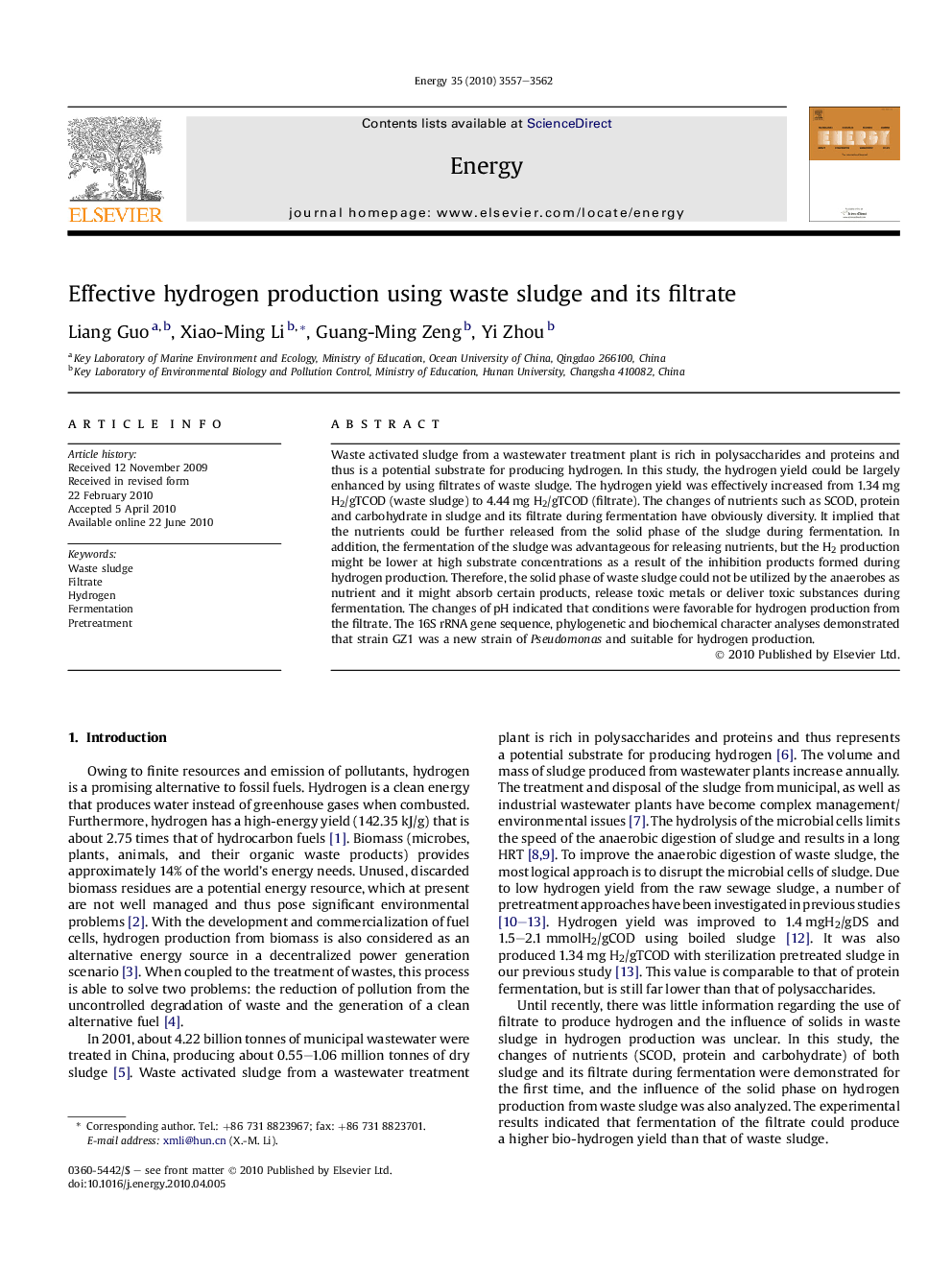| Article ID | Journal | Published Year | Pages | File Type |
|---|---|---|---|---|
| 1734926 | Energy | 2010 | 6 Pages |
Waste activated sludge from a wastewater treatment plant is rich in polysaccharides and proteins and thus is a potential substrate for producing hydrogen. In this study, the hydrogen yield could be largely enhanced by using filtrates of waste sludge. The hydrogen yield was effectively increased from 1.34 mg H2/gTCOD (waste sludge) to 4.44 mg H2/gTCOD (filtrate). The changes of nutrients such as SCOD, protein and carbohydrate in sludge and its filtrate during fermentation have obviously diversity. It implied that the nutrients could be further released from the solid phase of the sludge during fermentation. In addition, the fermentation of the sludge was advantageous for releasing nutrients, but the H2 production might be lower at high substrate concentrations as a result of the inhibition products formed during hydrogen production. Therefore, the solid phase of waste sludge could not be utilized by the anaerobes as nutrient and it might absorb certain products, release toxic metals or deliver toxic substances during fermentation. The changes of pH indicated that conditions were favorable for hydrogen production from the filtrate. The 16S rRNA gene sequence, phylogenetic and biochemical character analyses demonstrated that strain GZ1 was a new strain of Pseudomonas and suitable for hydrogen production.
